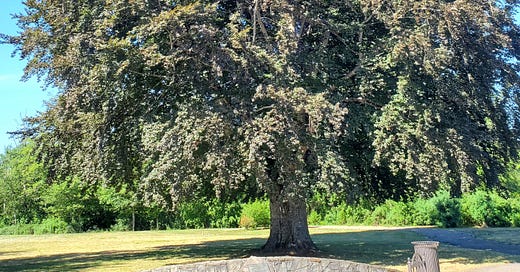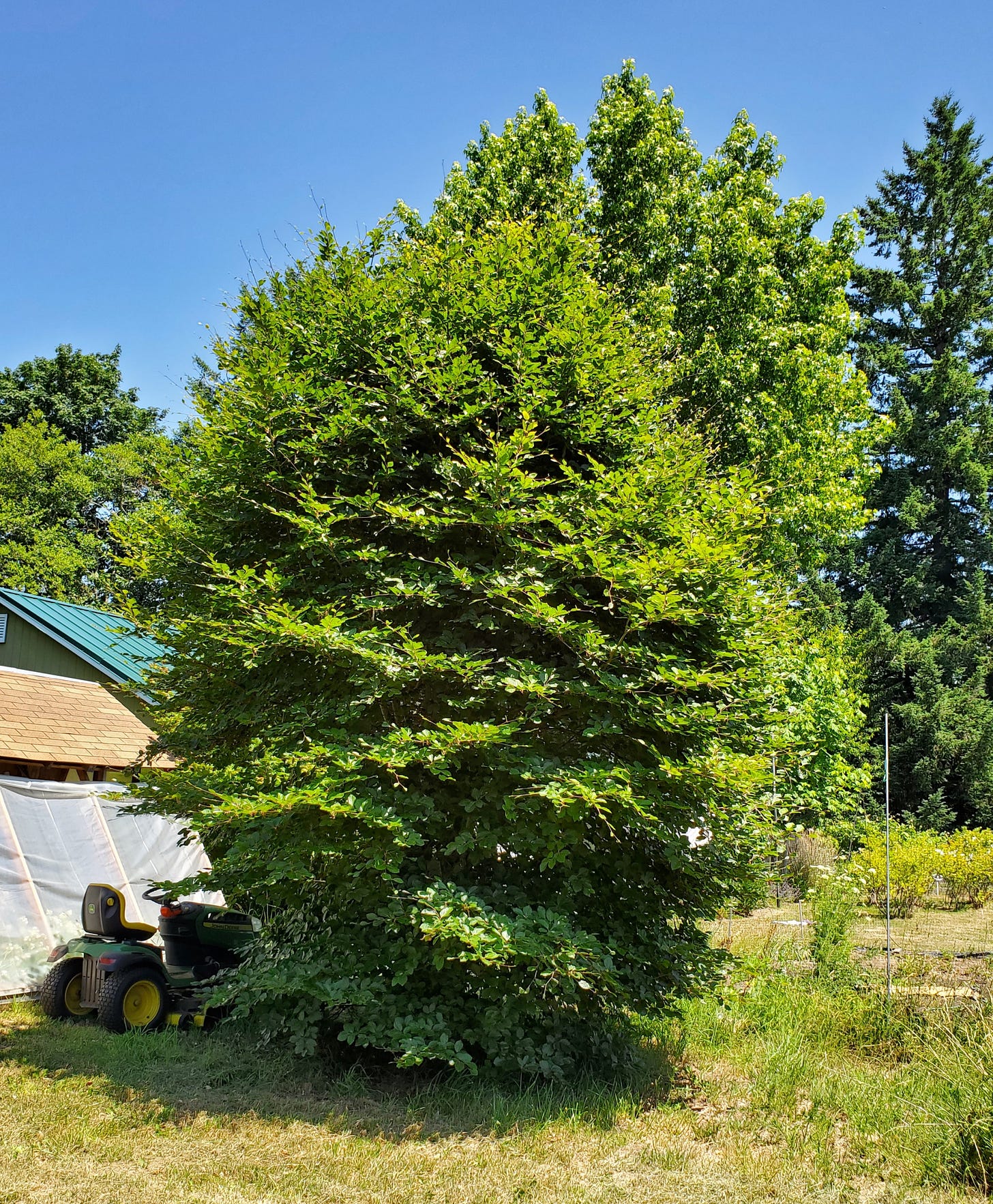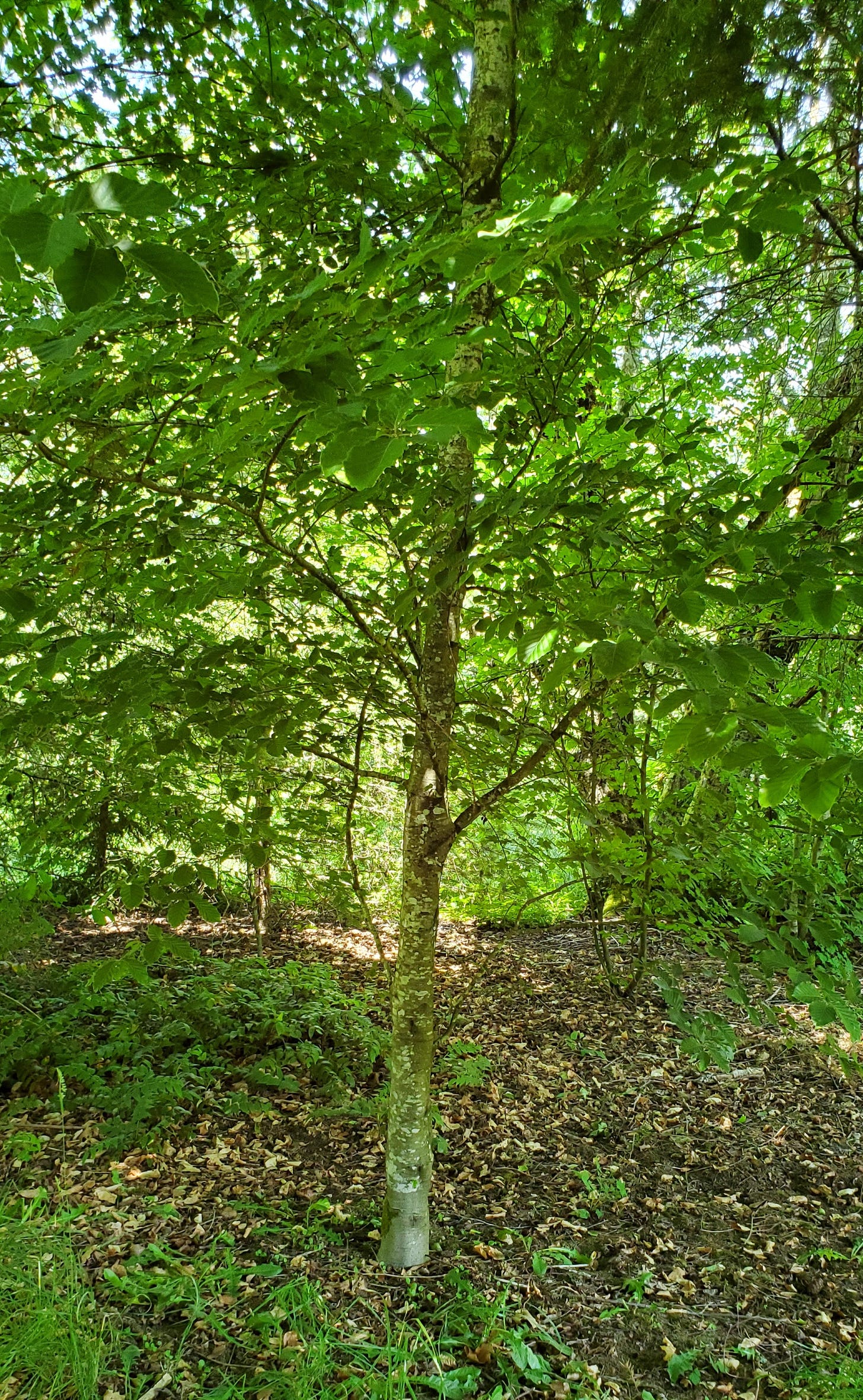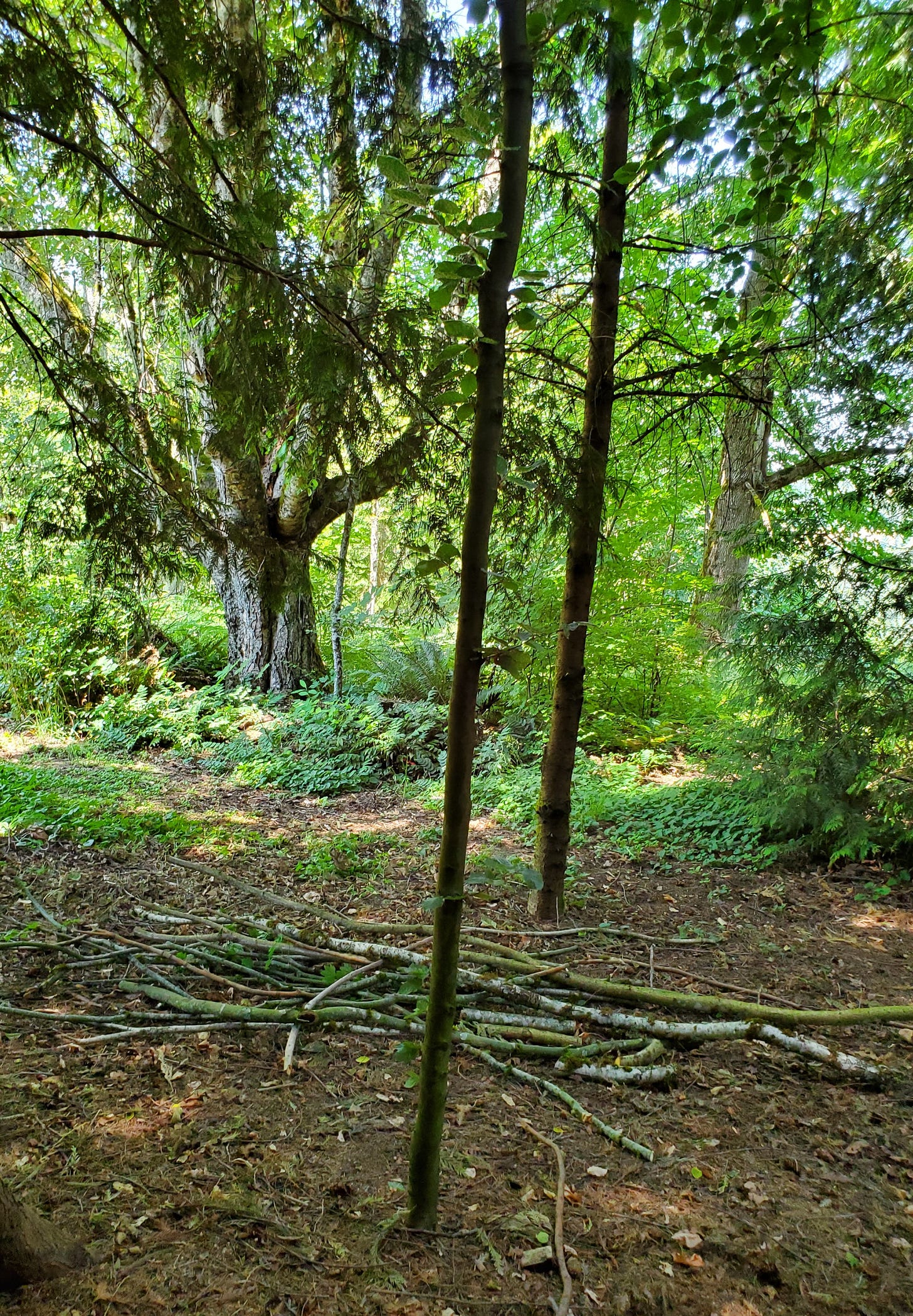200 yr old copper beech
I’m delving into the study of epigenetics, and expect to write a lot more about it, but today I just want to share an eye-opening experience of epigenetics observed in my own back yard.
It must have been 15 or 20 years ago that I was able to dig up some sprouting seedlings under this beautiful stately beech tree on the eastern edge of Gresham Oregon. I transplanted the seedlings into our garden and 3 survived. The next year, I moved them to 3 different locations. Because of epigenetics, (the influence of DNA’s ability to trigger different genetic responses to differences in environment), we got 3 different results. Remember, all 3 of these trees came from the same source, were planted at the same time, in the same kind of soil, and experienced the same climate. (dbl click to enlarge photos)
This one was planted in full sun. It has multiple trunks and has branches all the way from the ground up; almost bush-like.
This one was planted in a shady woods. Most of the leaves you see in this picture are from overlapping maple and hazlenut trees. The beech only has leaves on the very top, about 40’ high, where it reaches for the light. The single trunk is about 6” in diameter.
This 3rd tree (in foreground) was planted in an even shadier spot. It too is about 40’ high, reaching for light, but the trunk diameter is only about 3”. It too only has leaves on the top where it gets enough light.
Epigenetics is the way so much of DNA codes for controls and instructions that regulate all of our genes. The DNA sequences that control how an organism reacts to internal and external changes used to be called “junk” DNA, because these sequences don’t code for the production if proteins - scientists couldn’t see what the function was, so they jumped to the conclusion that there was no function. About 80% of our DNA falls in this mysterious category that is now an area of intense research.
In this example of these 3 beech trees, their DNA was not changed. The differences in growth weren’t mutations. They were adaptations to differences in the amount of light they received. The genes for producing proteins for trunks and leaves weren’t changed either; they were controlled and redirected in their growth patterns.
DNA is not just information. It is a cellular bio language that contains intelligence - an intangible characteristic. The words on this page aren’t just words; they are arranged to contain my thoughts - an intangible - that I’m conveying by the use of a language. The awesome engineering design of the DNA in every living cell is not just chemicals and proteins; it carries information that was obviously designed by an intelligent outside source for the purpose of reproducing and maintaining life with the ability to adapt to different stimuli and to sense and respond to those differences.
In our example of the beech trees, how does a tree “know” how much light it’s getting, and how much is enough? The answer to this question is not just in the code for making proteins for leaves and trunks - it has to be in a code that overrides (“epi”; over) and controls the genetics of production of those proteins.
God is the Great Designer.









I had biology in college but never experience this topic. If you want to see another example I just experience this but I didn't know anything about it. I helped make some garden boxes in our back yard. The soil I used was from our old compost pile. I didn't have much of the "good stuff" left since I had given some of it away. What I used was from an are I had dumped a cat litter box years ago. The cat had liver her life and had died several years ago so it was from an area maybe 5 to 7 years old. My cabbage plants are about three feet tall but no head has formed. Spinich is real straggly, it was producing seeds at the joint of the leaves and stem. I finished eating some that I had brought in this morning. The stems are hollow and tough. I didn't try to cook these. The leaves are OK but I also had put the seeds with them. The seeds were already almost to hard to eat. (Microwaved for three and a half minutes was oK for the leaves but not the seeds.). I looked on line about a possible cause of this and it said: "too much nitrogen in the soil can cause this but corn grows will in this type of soil" . I didn't plant any corn though. Yes, location and soil condition can change the looks and how they grow. If you want to study mine,, come over some Sunday afternoon when you are in the area.